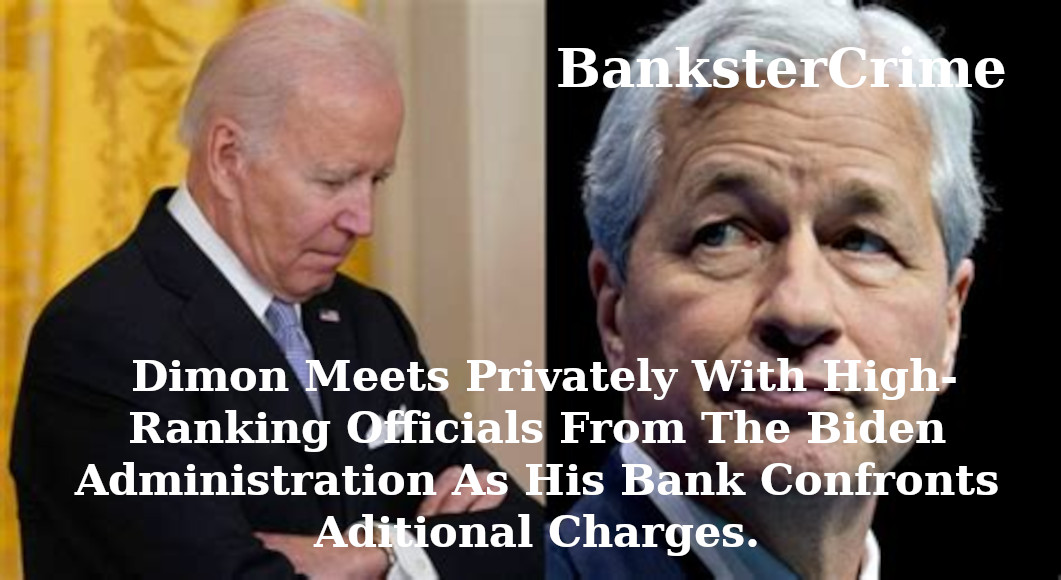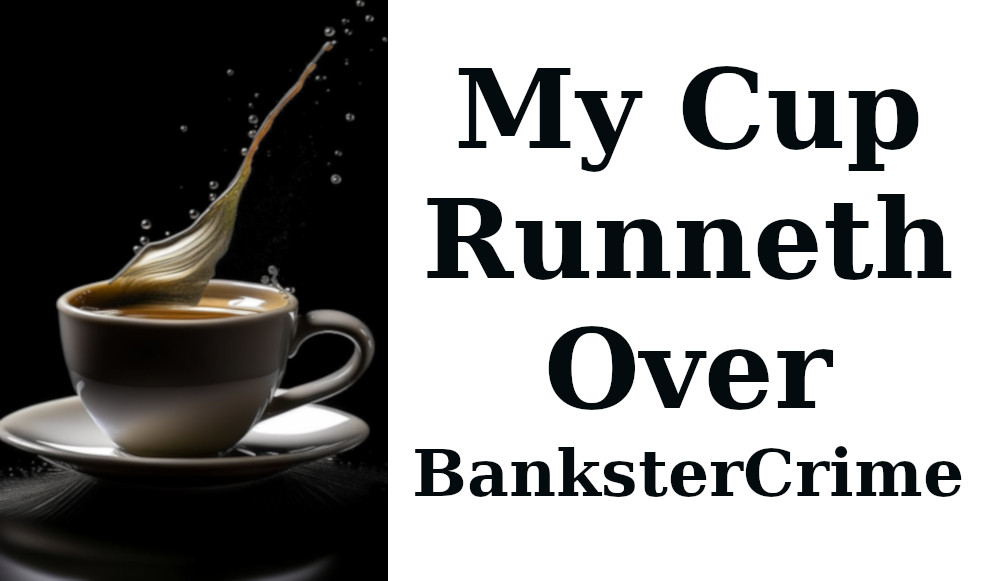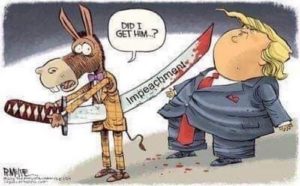
BanksterCrime:
CFTC Fines J.P. Morgan Securities — a Fed Primary Dealer — $100 Million for Failing to Surveil Potential Spoofing and High Frequency Trading for Eight Years…
By Pam Martens and Russ Martens,
Jamie Dimon, Chairman and CEO of JPMorgan Chase, Sits in Front of Trading Monitor in his Office (Source: 60 Minutes Interview, November 10, 2019)
How does a Wall Street trading firm gain competitive advantage to entice spoofers and high-frequency trading firms to use its trading platforms instead of those of its competitors? How about having its trading compliance personnel wear a blindfold as billions of trades occur over the span of 8 or 9 years?
That is essentially what three of JPMorgan Chase’s federal regulators have suggested is behind the $448 million in fines they’ve leveled against three separate units of the largest bank in the United States.
When JPMorgan Chase filed its quarterly report with the Securities and Exchange Commission on May 1, it sheepishly admitted that the $348 million it had already paid out to two of its regulators for trading violations was not the end of this saga. It said that it “expects to enter into a resolution with a third U.S. regulator that will require the Firm to, among other things, pay a civil penalty of $100 million….”
Last Thursday, ahead of a long holiday weekend, that third regulator, the Commodity Futures Trading Commission (CFTC), released its statement and imposed a fine of $200 million – which magically became $100 million by giving this five-count felon bank a $100 million credit for settling with the two other regulators. (If that makes zero sense to you, welcome to the Kafkaesque world of Wall Street and regulatory capture.)
The two federal banking regulators that imposed the earlier trading fines in March were the Office of the Comptroller of the Currency (OCC), which fined JPMorgan Chase Bank $250 million, while the Federal Reserve fined the bank holding company $98.2 million. The OCC said the misconduct occurred since at least 2019. The Federal Reserve said the bank had engaged in the misconduct over the span of nine years, from 2014 to 2023.
The CFTC took the position that the misconduct had occurred for eight years, from 2014 through 2021, and had involved “billions” of trades where a JPMorgan trading unit had failed to provide any surveillance.
The CFTC’s charges were directed at J.P. Morgan Securities LLC – a registered futures commission merchant and swap dealer with the CFTC as well as a broker-dealer registered with the Securities and Exchange Commission.
But far more problematic, J.P. Morgan Securities LLC is also one of the Federal Reserve’s “Primary Dealers,” whom the Fed relies upon to conduct its so-called “open market” operations.
The word “open” has also become one of those Kafkaesque terms when filtered through the carefully scripted reverse-speak of the Federal Reserve. J.P. Morgan Securities LLC received $2.9 trillion in secret, cumulative repo loans from the Fed in the fourth quarter of 2019 (adjusted for the term of the loan). This bailout was not revealed to the American people for two years by the Fed. When the data was finally released by the Fed, there was a total news blackout by mainstream media.
In September 2020, the U.S. Department of Justice charged JPMorgan Chase with two criminal felony counts for fraudulent activity in the precious metals market and the U.S. Treasury market. The CFTC was also involved in the settlement of those charges against the bank in 2020.
The CFTC’s Order last Thursday on its most recent charges against the bank suggests that it didn’t have the full picture from JPMorgan in 2020. The CFTC wrote:
“In September 2020, JPM entered into a settlement with the Commission to resolve allegations of spoofing, attempted manipulation of the trading of precious metals and U.S. Treasury futures contracts, and failure to supervise its trade surveillance system. In connection with that settlement, JPM represented that it was ‘[r]evising its trade . . . surveillance programs, for example JPM’s systems now surveil trades on over . . . 40 futures and options exchanges’ and that ‘JPM also continues to refine its spoofing surveillance, modifying its spoofing parameters in response to lessons learned . . . and currently uses three primary alert types within SMARTS [a third-party trade surveillance system] to detect potential spoofing and layering.’ ”
But now the CFTC learns that JPMorgan’s failure to surveil “billions” of trades continued into 2021. The CFTC writes in its release last Thursday:
“The magnitude of the gaps in JPM’s surveillance was large: On DCM-1, for example, JPM failed to ingest into its surveillance systems—and thus failed to surveil—billions of order messages from 2014 through 2021. Accordingly, JPM failed to surveil more than 99% of order messages on DCM-1 during that time period, which, according to JPM, largely consisted of sponsored access trading activity for three significant algorithmic trading firms.”
What is an “algorithmic trading firm”? It frequently means a hedge fund that uses algorithms to trade. It can also mean high frequency trading firms. This is how Senator Elizabeth Warren described high frequency trading at a Senate hearing on June 18, 2014:
“For me the term high frequency trading seems wrong. You know this isn’t trading. Traders have good days and bad days. Some days they make good trades and they make lots of money and some days they have bad trades and they lose a lot of money. But high frequency traders have only good days.
“In its recent IPO filing, the high frequency trading firm, Virtu, reported that it had been trading for 1,238 days and it had made money on 1,237 of those days…The question is that high frequency trading firms aren’t making money by taking on risks. They’re making money by charging a very small fee to investors. And the question is whether they’re charging that fee in return for providing a valuable service or they’re charging that fee by just skimming a little money off the top of every trade…
“High frequency trading reminds me a little of the scam in [the movie] ‘Office Space.’ You know, you take just a little bit of money from every trade in the hope that no one will complain. But taking a little bit of money from zillions of trades adds up to billions of dollars in profits for these high frequency traders and billions of dollars in losses for our retirement funds and our mutual funds and everybody else in the market place. It also means a tilt in the playing field for those who don’t have the information or have the access to the speed or big enough to play in this game.”
Adding to the perception that the American people are only seeing a tiny speck of sunlight into what JPMorgan Chase is paying $448 million to keep secret, is the fact that the federal agency charged with oversight of stock exchanges and securities trading – the Securities and Exchange Commission – appears to have gone missing in this matter.
The OCC – the federal regulator of federally-insured banks operating across state lines – wrote in its consent order against JPMorgan Chase’s federally-insured bank in March that: “The consequences of these deficiencies include the Bank’s failure to surveil billions of instances of trading activity on at least 30 global trading venues.”
The SEC cannot investigate trading inside a federally-insured bank. The SEC supervises securities exchanges, securities broker-dealers, investment advisors, and mutual funds. This raises the question, has JPMorgan Chase intentionally moved vast amounts of its trading inside its federally-insured bank to avoid the snooping eyes of the SEC?
That further raises the equally troubling question: do Americans want taxpayer-backstopped banks to be trading on “30 global banking venues”?
The answer is clearly “no” given that this is the same bank that gambled with depositors’ money in London in 2012, making hundreds of billions of dollars in high risk derivative trades, and losing $6.2 billion of depositors’ money according to an in-depth investigation and 300-page report from the U.S. Senate’s Permanent Subcommittee on Investigations.


Beef in Bulk: Half, Quarter, or Eighth Cow Shipped to Your Door Anywhere within Texas Only
We do not mRNA vaccinate our cattle, nor will we ever!
Grass Fed, Grass Finished Beef!
From Our Ranch to Your Table


![]()




